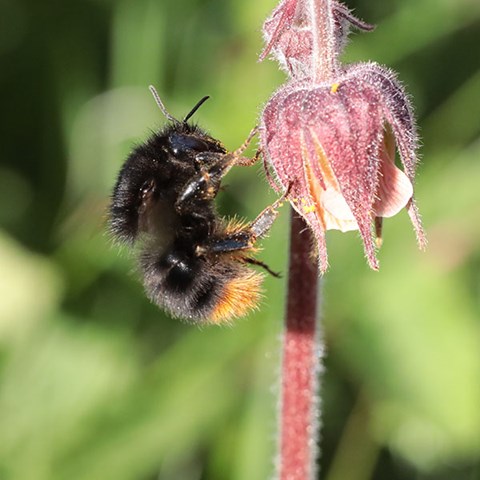Contact
René van der Wal
Professor of Environmental Citizen Science
Department of Ecology
rene.van.der.wal@slu.se

Despite substantial research and policy directives, declines of wild pollinating insects remain widespread across Europe and pollinator-friendly land and natural resource management are exception rather than rule. Given the importance of wild pollinators to society and their role as flagship for biodiversity, it is important to understand the barriers to and motivations for effective pollinator conservation. And from there work with others to try and change the situation.
Pollinators have made it into EU policies remarkably swiftly. Yet, where exactly - and where not - is what ultimately matters and here things are less clear. We work with world-leading experts on pollinators to understand how their rich knowledge and expertise on ecology and land management travels and what then ends up in policies. This requires investigation of the interplay between actors in pollinator conservation and in other relevant sectors, looking at agency, knowledge, influence and power. That way we are trying to reveal which forces keep certain pollinator-unfriendly approaches in place and to identify strategies to overcome these forces.
Pollinators are an important part of biodiversity, which in turn plays an important role in maintaining productive farming systems through the pollination, natural pest regulation and soil services it provides. The evidence base underlying effective biodiversity conservation on farmland has steadily strengthened, and we now have a reasonable understanding of what actions are needed to halt the loss of farmland biodiversity. However, these actions are rarely adopted by the farming sector at a scale sufficient for significant biodiversity benefits, indicating that knowledge-making has not been a sufficiently inclusive process. We work with farmers and naturalists – people who know nature first hand – to forge and study new partnerships can be formed around the monitoring of biodiversity, and determine whether this influences farmers’ attitudes towards biodiversity-friendly farming.
René van der Wal
Professor of Environmental Citizen Science
Department of Ecology
rene.van.der.wal@slu.se